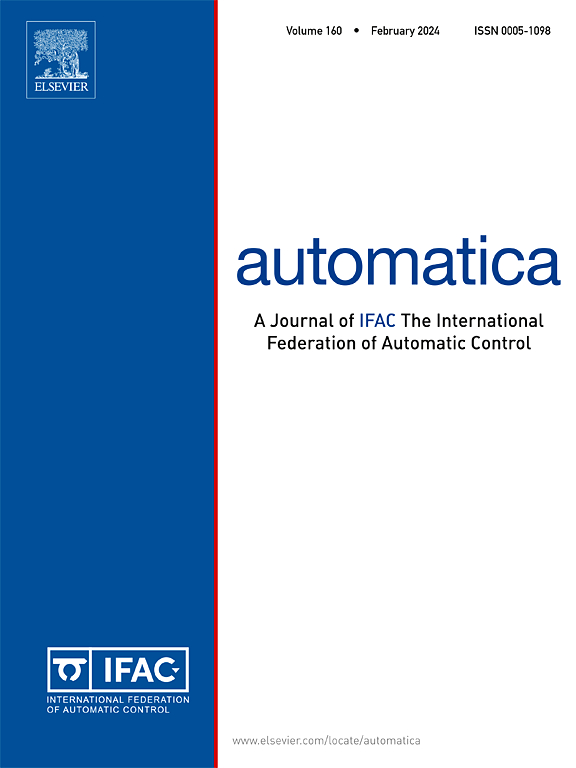基于仿真的Stefan问题快速最优控制方法及其在细胞治疗中的应用
IF 5.9
2区 计算机科学
Q1 AUTOMATION & CONTROL SYSTEMS
引用次数: 0
摘要
本文描述了一种新的、有效的方法来寻找最优控制问题的控制和状态轨迹,将其重新表述为微分代数方程(DAEs)系统。用所选的DAE求解器对得到的DAE系统进行仿真,可以得到最优控制和状态向量,从而消除了优化求解器的需要。我们基于模拟的方法通过与细胞治疗的Stefan问题的优化和控制相关的四个案例研究,对各种基于优化的算法进行了演示和基准测试。基于模拟的方法比基于优化的方法快一个数量级以上,同时在所有情况下提供相似/更好的准确性。基于模拟的方法得到的解保证是最优的,只要由重新表述得到的约束或代数方程在任何时候都至少有一个是有效的。所提出的技术为最优控制提供了一个高效可靠的框架,在速度至关重要的应用中,例如实时在线模型预测控制,作为传统技术的一个有前途的替代方案。本文章由计算机程序翻译,如有差异,请以英文原文为准。
Simulation-based approach for fast optimal control of a Stefan problem with application to cell therapy
This article describes a new, efficient way of finding control and state trajectories in optimal control problems by reformulation as a system of differential–algebraic equations (DAEs). The optimal control and state vectors can be obtained via simulation of the resulting DAE system with the selected DAE solver, eliminating the need for an optimization solver. Our simulation-based approach is demonstrated and benchmarked against various optimization-based algorithms via four case studies associated with the optimization and control of a Stefan problem for cell therapy. The simulation-based approach is faster than every optimization-based method by more than an order of magnitude while giving similar/better accuracy in all cases. The solution obtained from the simulation-based approach is guaranteed to be optimal provided that at least one constraint or algebraic equation resulting from the reformulation remains active at all times. The proposed technique offers an efficient and reliable framework for optimal control, serving as a promising alternative to the traditional techniques in applications where speed is crucial, e.g., real-time online model predictive control.
求助全文
通过发布文献求助,成功后即可免费获取论文全文。
去求助
来源期刊

Automatica
工程技术-工程:电子与电气
CiteScore
10.70
自引率
7.80%
发文量
617
审稿时长
5 months
期刊介绍:
Automatica is a leading archival publication in the field of systems and control. The field encompasses today a broad set of areas and topics, and is thriving not only within itself but also in terms of its impact on other fields, such as communications, computers, biology, energy and economics. Since its inception in 1963, Automatica has kept abreast with the evolution of the field over the years, and has emerged as a leading publication driving the trends in the field.
After being founded in 1963, Automatica became a journal of the International Federation of Automatic Control (IFAC) in 1969. It features a characteristic blend of theoretical and applied papers of archival, lasting value, reporting cutting edge research results by authors across the globe. It features articles in distinct categories, including regular, brief and survey papers, technical communiqués, correspondence items, as well as reviews on published books of interest to the readership. It occasionally publishes special issues on emerging new topics or established mature topics of interest to a broad audience.
Automatica solicits original high-quality contributions in all the categories listed above, and in all areas of systems and control interpreted in a broad sense and evolving constantly. They may be submitted directly to a subject editor or to the Editor-in-Chief if not sure about the subject area. Editorial procedures in place assure careful, fair, and prompt handling of all submitted articles. Accepted papers appear in the journal in the shortest time feasible given production time constraints.
 求助内容:
求助内容: 应助结果提醒方式:
应助结果提醒方式:


